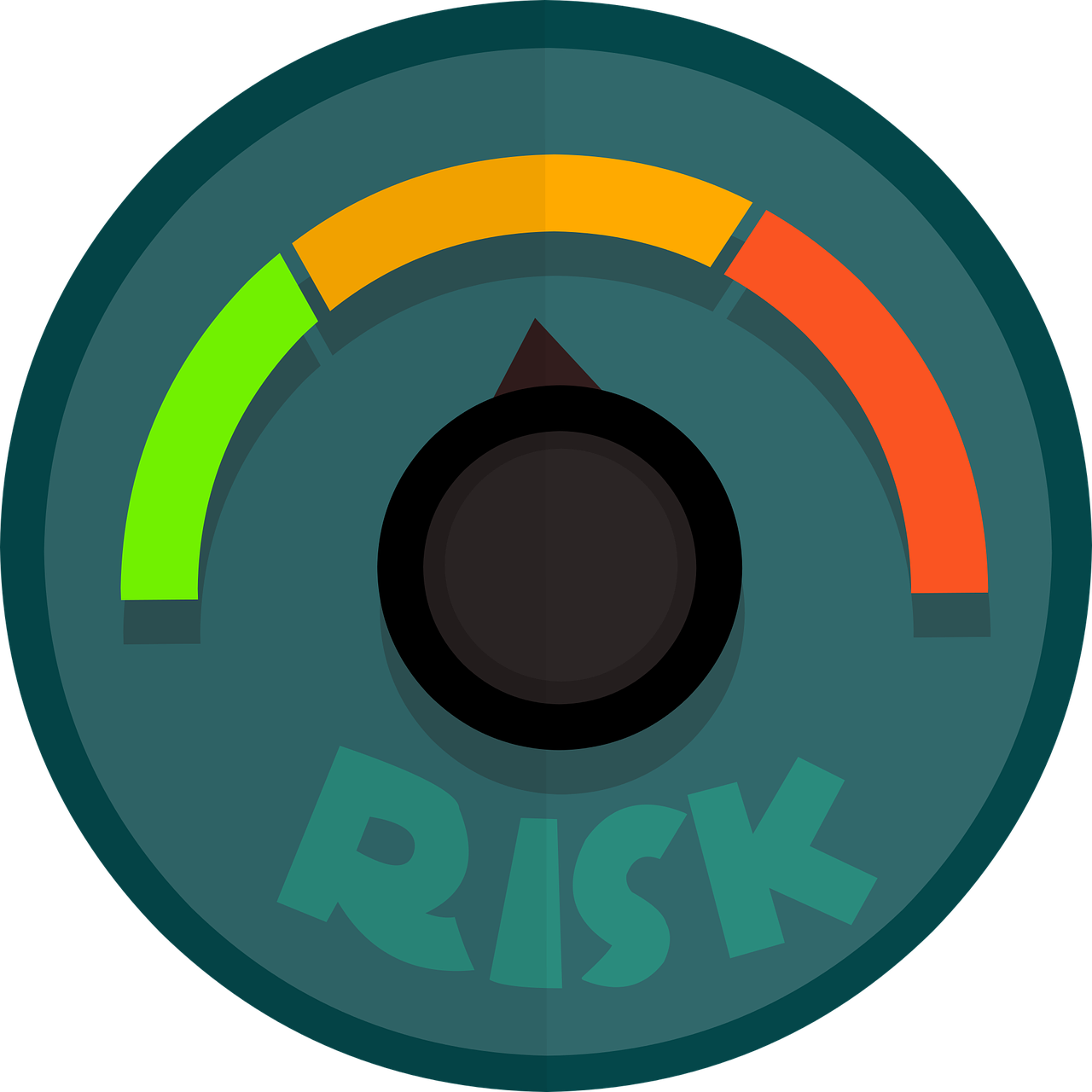
What Is Project Risk Management?
What Is Project Risk Management
In order to successfully manage a project, it is important to understand and address potential risks that may arise along the way. This article provides valuable insights on how to identify and mitigate risks within a project. With a focus on project management, programme management, and Agile methodologies, this content aims to equip readers with the knowledge and understanding needed to effectively navigate and mitigate risks in their projects. So, let’s delve into the world of project risk mitigation and discover strategies to ensure project success.
Speak to MCTC today about our consultancy advice and training packages.

Understanding Project Risk Mitigation
Definition of Project Risk Mitigation
Project risk mitigation refers to the process of identifying, analysing, and managing potential risks that could impact the successful completion of a project. It involves implementing strategies and measures to minimise the likelihood of risks occurring or their potential negative impact. Risk mitigation is an essential part of project management, as it helps organisations anticipate and address potential issues before they escalate and become major obstacles.
Importance of Project Risk Mitigation
Project risk mitigation is crucial for the success of any project. By proactively identifying and addressing potential risks, organisations can minimise the chances of project failures, cost overruns, and delays. It allows project managers to allocate resources effectively, enhance stakeholder satisfaction, and improve overall project outcomes. Risk mitigation also helps organisations build resilience, adapt to changes more efficiently, and demonstrate their commitment to delivering quality results.
Benefits of Project Risk Mitigation
Implementing a robust risk mitigation strategy offers various benefits to organisations. Firstly, it helps in preventing potential negative outcomes, such as budget overruns, schedule delays, and quality issues. By addressing risks beforehand, organisations can ensure the smooth progress of their projects and maintain stakeholders’ confidence. Risk mitigation also enables organisations to make informed decisions based on a thorough understanding of potential impacts, allowing them to allocate resources more effectively. Additionally, successful risk mitigation enhances the organisation’s reputation and credibility, positioning it as a reliable and competent player in the industry.
Identifying Project Risks
Risk Identification Techniques
One of the first steps in project risk mitigation is identifying the potential risks associated with a project. Various risk identification techniques can be used, including brainstorming sessions, expert interviews, and historical data analysis. Brainstorming sessions involve gathering project team members and stakeholders to identify risks collaboratively. Expert interviews, on the other hand, involve seeking advice from subject matter experts who have extensive experience in the specific domain. Analysing historical data from previous projects can also provide insights into potential risks that might occur in the current project.
Types of Project Risks
Project risks can be categorised into several types, including technical risks, financial risks, organisational risks, and environmental risks. Technical risks refer to potential issues related to the project’s technology, such as compatibility challenges or technical limitations. Financial risks involve factors that could impact the project’s budget, such as cost overruns, unexpected expenses, and changes in currency exchange rates. Organisational risks pertain to issues arising from the project team or the organisation itself, such as inadequate resources, poor communication, or lack of stakeholder support. Environmental risks consider external factors that could affect the project, such as natural disasters, regulatory changes, or political instability.
Common Project Risk Factors
While every project is unique, there are some common risk factors that can affect a wide range of projects. These include inadequate planning and project scope definition, unrealistic timelines, insufficient resource allocation, ineffective communication, poor change management, and lack of stakeholder involvement. Incomplete requirements, unclear project objectives, and dependencies on external parties can also contribute to project risks. It is crucial for project managers to be aware of these common risk factors and address them upfront to ensure project success.

Assessing Project Risks
Risk Assessment Methods
After identifying potential risks, the next step is to assess and evaluate their potential impact and likelihood. Risk assessment methods help project managers analyse the risks and prioritise them for further action. Some commonly used risk assessment methods include qualitative assessment, semi-quantitative assessment, and quantitative assessment. Qualitative assessment involves assigning subjective ratings to risks based on their severity, likelihood, and impact. Semi-quantitative assessment combines qualitative assessment with limited quantitative analysis to provide a more comprehensive understanding of risks. Quantitative assessment, on the other hand, involves detailed numeric analysis, using probability distributions and cost estimation techniques, to quantify risks accurately.
Quantitative Risk Analysis
Quantitative risk analysis involves using numerical data and statistical techniques to evaluate the impact of risks on project objectives. It requires gathering accurate data and applying analytical models to assess the overall project risk exposure. Some commonly used quantitative techniques include Monte Carlo simulation, decision tree analysis, and sensitivity analysis. Monte Carlo simulation helps in simulating project outcomes by considering multiple risk scenarios and their probabilities. Decision tree analysis helps in determining the optimal course of action based on potential risks and rewards. Sensitivity analysis helps in identifying the critical factors that have the most significant impact on project outcomes.
Qualitative Risk Analysis
Qualitative risk analysis involves the subjective evaluation of risks based on their potential impact and likelihood. It relies on expert judgement and allows for a quick assessment of risks without the need for extensive data analysis. Qualitative risk analysis typically involves creating a risk probability and impact matrix, assigning risk ratings, and identifying the most significant risks. It helps project managers gain a broad understanding of the project’s risks, prioritise them, and determine the appropriate risk response strategies. While qualitative risk analysis does not provide as accurate and precise results as quantitative analysis, it is often a practical approach in situations where data availability and time constraints are limiting factors.
Prioritising Project Risks
Risk Prioritisation Techniques
Once risks have been assessed, they need to be prioritised based on their significance and potential impact. Risk prioritisation techniques help project managers determine the order in which risks should be addressed to mitigate their potential negative consequences. Some commonly used risk prioritisation techniques include the risk impact/probability matrix, risk scoring models, and risk categorisation. These techniques enable project managers to focus their resources and efforts on the risks that pose the greatest threat to the project’s success.
Impact vs. Probability Matrix
The impact vs. probability matrix is a popular risk prioritisation tool that helps project managers visualise and categorise risks based on their impact and likelihood. It involves plotting risks on a two-dimensional matrix, with impact on one axis and probability on the other. Risks can be classified into high, medium, or low priority based on their placement in the matrix. High priority risks are those with a high likelihood of occurrence and significant impact on the project objectives. Medium priority risks have a moderate likelihood and impact, while low priority risks have a low likelihood and impact.
Risk Scoring Models
Risk scoring models assign a numeric score to each risk based on predefined criteria and weightings. Project managers can use various models, such as the risk exposure index (REI), risk priority number (RPN), or risk severity index (RSI), to calculate the risk scores. These scores help in ranking risks and determining their relative priority. Risk scoring models provide a structured and objective approach to risk prioritisation, allowing project managers to compare risks across different projects or prioritise risks within the same project effectively.
Developing Risk Mitigation Strategies
Risk Mitigation Planning
Risk mitigation planning involves developing strategies and action plans to address identified risks effectively. It requires collaboration among project team members and stakeholders to determine the most appropriate responses to specific risks. Risk mitigation planning involves identifying risk triggers, defining risk response options, and establishing contingency plans. It is essential to involve subject matter experts and key stakeholders in the planning process to ensure comprehensive coverage of potential risks and the feasibility of mitigation strategies.
Risk Response Planning
Risk response planning focuses on defining appropriate actions for addressing identified risks. There are four primary risk response strategies: risk avoidance, risk acceptance, risk transfer, and risk mitigation. Risk avoidance involves eliminating or minimising the risk by redesigning the project scope, changing project constraints, or avoiding certain activities. Risk acceptance refers to acknowledging the risk but not taking any proactive action to mitigate it, usually because the potential impact is low or the cost of mitigation outweighs the benefits. Risk transfer involves transferring the risk to a third party, such as an insurance provider or a subcontractor. Risk mitigation involves implementing measures to reduce the probability or impact of the risk.
Contingency Planning
Contingency planning involves preparing for potential risks by developing backup plans or alternative approaches. It helps project managers manage unexpected events or changes that could adversely affect the project’s success. Contingency plans typically outline alternative strategies, resource allocation plans, and communication approaches to be implemented if specific risks materialise. Developing contingency plans in advance enables project teams to respond quickly and effectively when risks occur, minimising the negative impact on the project’s objectives.
Implementing Risk Mitigation Measures
Establishing Risk Management Plan
Implementing risk mitigation measures requires a comprehensive risk management plan. The risk management plan outlines the overall approach, processes, and responsibilities for managing risks throughout the project life cycle. It defines the roles and responsibilities of the project team members, establishes risk management processes, and identifies the tools and techniques to be used. The risk management plan also provides guidelines for risk documentation, communication, and reporting. It is essential to have a well-defined risk management plan in place to ensure consistency and clarity in implementing risk mitigation measures.
Assigning Responsibilities
Assigning clear roles and responsibilities to project team members is crucial for the successful implementation of risk mitigation measures. Each team member should have a clear understanding of their responsibilities related to risk identification, assessment, response planning, and monitoring. Project managers should ensure that team members have the necessary skills and knowledge to fulfil their assigned risk management tasks. Regular communication and coordination among team members are necessary to ensure effective collaboration and timely implementation of risk mitigation measures.
Tracking and Monitoring Risks
Tracking and monitoring risks throughout the project life cycle is essential to ensure that risk mitigation measures are effective and up-to-date. Project managers should establish a structured approach for reviewing and updating risk registers, evaluating the status of identified risks, and assessing the effectiveness of implemented mitigation strategies. Regular risk review meetings, progress assessments, and status reports help in keeping all stakeholders informed about the current risk profile of the project. By continuously tracking and monitoring risks, project managers can adapt and adjust risk mitigation measures as needed to maintain project success.

Managing Project Stakeholders
Engaging Stakeholders in Risk Mitigation
Managing project stakeholders effectively is crucial for successful risk mitigation. Stakeholders play a vital role in identifying potential risks, providing valuable input during risk assessment, and developing risk mitigation strategies. Engaging stakeholders in risk mitigation activities helps in gaining their buy-in, building trust, and obtaining valuable insights from their expertise. Regular communication and consultation with stakeholders create a collaborative environment where risks can be addressed collectively, ensuring that all perspectives are considered in the decision-making process.
Communication and Reporting
Effective communication and reporting are essential components of stakeholder engagement in risk mitigation. Project managers should establish clear communication channels and provide regular updates on the progress of risk mitigation activities. Communication should be timely, transparent, and tailored to the needs of different stakeholders. Project managers should ensure that stakeholders receive the necessary information to understand the risks, their potential impact, and the measures being taken to mitigate them. Reporting on risk mitigation progress and outcomes helps in demonstrating the project’s commitment to stakeholder satisfaction and project success.
Stakeholder Engagement Strategies
Developing stakeholder engagement strategies can help project managers effectively involve stakeholders in risk mitigation. Different stakeholders have different levels of influence and interest in the project, and their engagement strategies should be tailored accordingly. Strategies can include conducting stakeholder analysis to identify key stakeholders, developing communication plans, involving stakeholders in risk identification workshops or meetings, and establishing feedback mechanisms. Regular stakeholder engagement activities demonstrate the project’s commitment to transparency, accountability, and collaboration, fostering a positive environment for risk mitigation.
Using Agile Project Management for Risk Mitigation
Agile Principles and Risk Management
Agile project management methodologies can significantly contribute to effective risk mitigation. Agile principles, such as iterative and incremental project delivery, cross-functional teams, and continuous improvement, promote flexibility, adaptability, and collaboration, which are critical in managing risks. Agile approaches encourage early and frequent risk identification and response planning, allowing project teams to address potential issues promptly. The collaborative nature of agile teams also facilitates effective communication and stakeholder engagement, ensuring that risks are identified and addressed collectively.
Scrum and Risk Mitigation
Scrum, one of the most widely used agile frameworks, provides a structured approach to risk mitigation. The Scrum framework divides the project into short iterations called sprints, during which risks can be identified, analysed, and addressed. The daily scrum meetings provide an opportunity for team members to discuss potential risks and develop risk mitigation strategies collaboratively. The Scrum Master plays a crucial role in facilitating risk management activities, ensuring that risks are appropriately addressed and that the project remains on track.
Adaptive Risk Management in Agile Environment
Agile project management promotes adaptive risk management, which means continuously monitoring and adjusting risk mitigation strategies based on changing project circumstances. The iterative nature of agile projects allows for regular review and re-prioritisation of risks as the project progresses. Agile teams are encouraged to experiment with risk mitigation approaches, learn from their experiences, and adjust their strategies accordingly. This adaptive approach to risk management enables agile projects to respond quickly to emerging risks, seize opportunities, and maintain project flexibility in dynamic environments.
Monitoring and Reviewing Risk Mitigation Measures
Continuous Risk Monitoring
Continuous risk monitoring is crucial to ensure that risk mitigation measures remain effective throughout the project. It involves regularly reviewing the status of identified risks, assessing the effectiveness of implemented mitigation strategies, and identifying any emerging risks. Continuous risk monitoring helps project managers track changes in risk profiles, identify potential deviations from the risk management plan, and take timely corrective action. It also provides an opportunity to learn from past experiences and adjust risk mitigation strategies to improve future project outcomes.
Performance Metrics and Indicators
Establishing performance metrics and indicators helps in measuring the effectiveness of risk mitigation measures. These metrics can include the percentage of risks addressed, the percentage of risks successfully mitigated or avoided, the impact of risks on project objectives, and the timeliness of risk response actions. By tracking these metrics, project managers can assess the overall performance of risk mitigation efforts, identify areas for improvement, and demonstrate the value of risk management to project stakeholders. Performance metrics and indicators provide objective evidence of the project’s risk management capabilities and contribute to future risk mitigation planning.
Evaluation and Lessons Learned
Evaluating the effectiveness of risk mitigation measures is essential to enhance future risk management practices. Project managers should conduct regular evaluations to identify lessons learned and best practices that can be applied to future projects. Evaluation activities can involve conducting post-project reviews, analysing the success of risk response actions, and obtaining feedback from project team members and stakeholders. By capturing lessons learned, project managers can continuously improve their risk mitigation strategies and enhance the organisation’s overall risk management capabilities.
Conclusion
Summary of Project Risk Mitigation
Project risk mitigation plays a critical role in ensuring the success of any project. By proactively identifying, assessing, and addressing potential risks, organisations can minimise the likelihood of project failures, cost overruns, and delays. Risk mitigation involves various processes, including risk identification, assessment, prioritisation, planning, implementation, and monitoring. It requires collaboration among project team members and stakeholders, effective communication, and adaptive approaches to risk management. Implementing a robust risk mitigation strategy helps organisations build resilience, improve stakeholder satisfaction, and deliver quality results.
Key Takeaways
- Project risk mitigation involves identifying, analysing, and managing potential risks that could impact the successful completion of a project.
- Risk identification techniques include brainstorming sessions, expert interviews, and historical data analysis.
- Project risks can be categorised into technical risks, financial risks, organisational risks, and environmental risks.
- Risk assessment methods include qualitative assessment, semi-quantitative assessment, and quantitative assessment.
- Risk prioritisation techniques include the impact vs. probability matrix and risk scoring models.
- Risk mitigation planning involves developing strategies and action plans to address identified risks effectively.
- Risk response planning includes risk avoidance, risk acceptance, risk transfer, and risk mitigation strategies.
- Contingency planning helps in preparing for potential risks by developing backup plans or alternative approaches.
- Effective risk mitigation requires establishing a comprehensive risk management plan, assigning clear responsibilities, and tracking and monitoring risks throughout the project life cycle.
- Stakeholder engagement plays a vital role in risk mitigation through effective communication, reporting, and collaborative decision-making.
- Agile project management methodologies promote adaptive risk management and facilitate early and frequent risk identification and response planning.
- Continuous risk monitoring, performance metrics, and evaluation activities help in assessing the effectiveness of risk mitigation measures and capturing lessons learned.
Future Trends in Project Risk Mitigation
As organisations continue to embrace new technologies, adopt agile practices, and operate in increasingly complex environments, project risk mitigation is expected to evolve. Artificial intelligence and machine learning algorithms are likely to play a more significant role in risk identification and analysis. Predictive analytics and data-driven risk management approaches will enable organisations to proactively anticipate and address risks before they materialise. The integration of risk management into agile project management methodologies will become more seamless, ensuring that risk mitigation becomes an integral part of project delivery. Finally, organisations will recognise the importance of risk culture and develop strategies to foster a proactive and risk-aware mindset among project team members and stakeholders.
